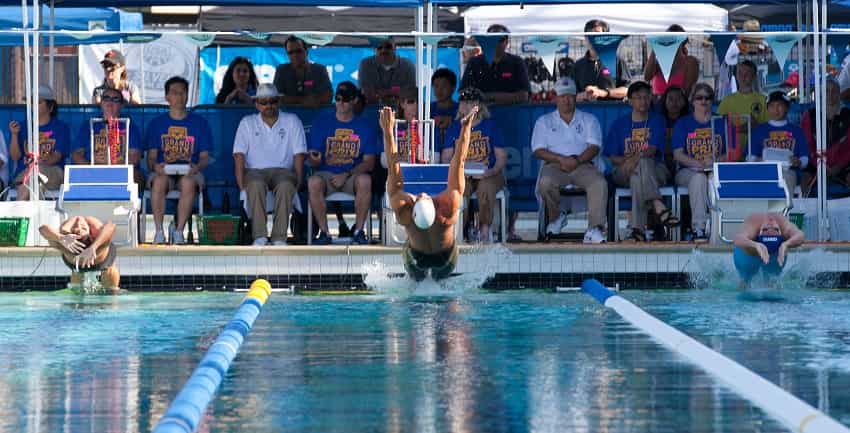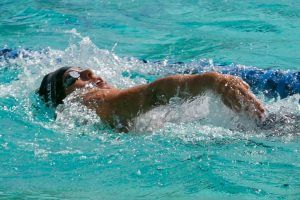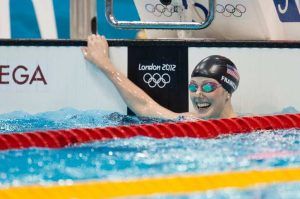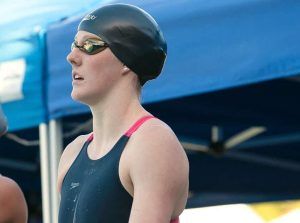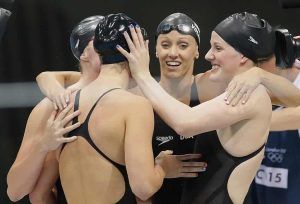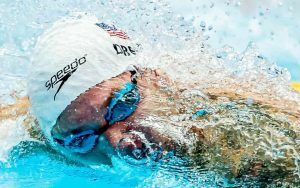We all have weaknesses in our training and swimming that we go out of our way to avoid. Here’s how to master the soft spots and maximize our potential in the water.
If you are like most competitive swimmers, the excel to desire is strong.
With all of the time spent in the water, and all the time spent thinking about it outside the pool, we want to be good—nope, check that—great in the water.
The soft spots in our swimming leave us feeling not great. Vulnerable even, like we aren’t as good as we should or could be, and as a result, we further avoid addressing them.
Or perhaps we refuse working on them because we are dead-set on believing that because the way things are right now that’s the way things will always be.
But then those weaknesses come home to roost:
- Your swim start is perpetually leaving you half a body length behind during every single race.
- Your lack of consistency in training means that swimmers you used to beat soundly are challenging and even beating you now.
- Your less-than-awesome flutter kick means you are getting destroyed on the back half of races when the competition continually surges past you on the final lap.
Whatever the case, you have decided enough is enough, and that you are going to finally address those soft spots in your swim training in order to become a faster athlete in the water.
So how do we constructively go at attacking these things?
Here are just a few ideas for how to address the weaknesses in your swimming:
Check your perfectionism.
Sucking at something…sucks.
As a less-than-awesome breaststroker I resented the stroke as I would be relegated towards the back of the lane anytime a set came up that focused on what for me felt awkward and almost certainly looked ugly.
My lane-mates would swim effortlessly by, the frustration mounting as I counted down the seconds until I got back to the comfortable confines of backstroke and freestyle.
Because of my chagrin I went out of my way to avoid the stroke during workout, and it never came close to seeing the potential it held had I only been a little more willing to embrace the suck.
Nobody particularly enjoys being weak at something, much less having to train it, further exposing that weakness. As a result, we avoid it all costs because we don’t like the idea of not being able to do something well.
The reality is that we have to brave the ugly, sucky parts of training if we are truly wanting to improve that breaststroke, err, weak part of our swimming.
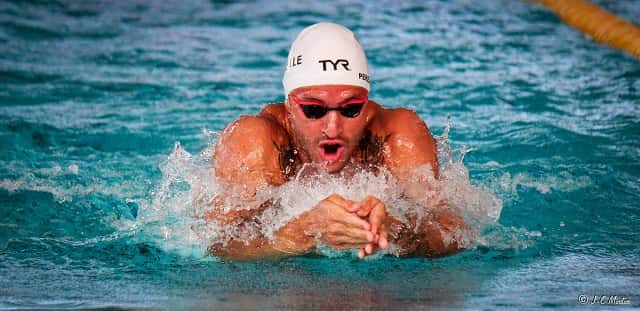
Remember that the struggle is part of the deal and check your perfectionism at the door.
Talk to your coach and get a plan in place.
You aren’t alone in your battle to conquer your training.
You have someone in your corner who is an experienced professional whose job description literally includes “help swimmers kick 40% more butt at the pool by destroying their weaknesses.”
(Okay, maybe not literally…)
Sit down and perform a training audit and formulate a plan with your coach to address the weakness in training.
Don’t underestimate the simple step of having a plan in place, particularly one that is assisted by your coach.
It can be just the thing to create a layer of confidence in your swimming again, and can help calm some of the “but I don’t even know where to start!” anxieties that typically come up when we realize that something needs to desperately change.
Start by spending just five minutes a day working on it.
When it comes to fixing something in our training the temptation is to go all-in right away. To spend all of our effort and energy trying to inflict the maximum amount of damage possible. All-or-nothing, and anything less is utterly pointless!
But trying to improve this way often ends up in frustration because we rarely see the immediate improvement and results we want.
The trick is to take a longer term approach to addressing the weakness in your training, and the most powerful and consistent way to do this is by giving it small amounts of attention each day.
After all, things don’t become a weakness by accident; it’s almost always because of purposeful neglect, and the reasons we avoided them in the first place aren’t going to be overcome by a short-term blast of effort and energy.
- If your underwater dolphin kick is absolutely abysmal spend five minutes during your workout doing 25’s at varying speeds out to the 10-15m mark.
- If you have been consistently suffering from swimmer’s shoulder than take five minutes every day after practice to complete the stretches and exercises prescribed by your physical therapist.
- If your freestyle kick needs some desperate work add 5 minutes of kickboard work during warm-up each day.
Five minutes per day doesn’t seem like much.
Which is kind of the point—it is easy to do and easier to stick with.
The Takeaway
It’s a rewarding feeling mastering something that we considered ourselves not very good at.
The moment you look back at how much you have improved a particular aspect of your training you’ll look back and feel a little silly; as in, why did I wait so long to do this?
Check your ego. Throw together a plan with your coach. Start small. And blast your way through your weaknesses to faster swimming.

